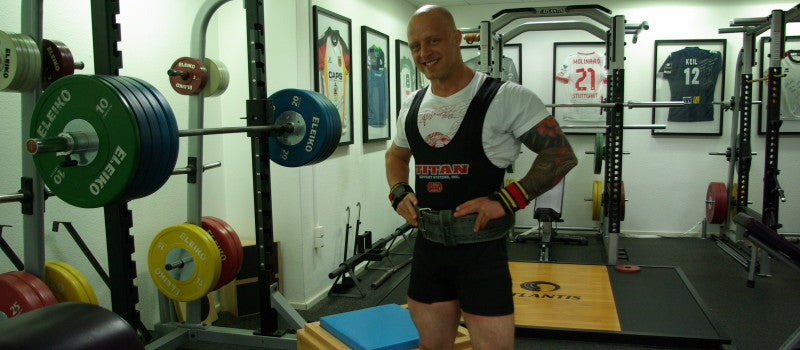
What are Squat Suits and Bench Shirts?
A powerlifting competition is comprised of three lifts: Squat, Bench Press and Deadlift. Then there are also two types of powerlifting. One is raw, in which lifters are permitted to wear a weightlifting belt, wrist wraps and knee sleeves. The other is equipped powerlifting, which permits the use of special powerlifting assistance clothing. Like a squat or deadlift suit and a bench press shirt.
The suits or shirts are made out of single or multiple layers which are made from very tight material (polyester) with a tight fit to provide extra tension that allows you to lift much more weight. It´s not uncommon for the lifters when they start using a squat suit for the first time to not be able to hit full depth due to the tension in the suit. There are even stories from the warmup area at powerlifting meets where a lifter was not able to lower a 180kg bar onto his chest because the (the) shirt he used was so tight.
The main benefit of suits and shirts
So the main benefit of a suit and shirt is that it provides extra tension which allows you to lift much more weight compared to a raw lift. It´s common to add 100kg and more to your squat and bench press by just wearing the equipment. Since powerlifting is all about lifting the highest weight possible, through a given range, the suit and shirt is a great tool.
There are a few more considerations with suits and shirts:
The change in the strength curve with suits and shirts
Lifting technique changes quite a bit primarily due to the change in the strength curve when using equipment such as a suit or shirt. As the suit and shirt increases tension during the eccentric, it actually makes you stronger the lower you go. Which leads to a descending strength curve – as it makes you lift more at the bottom. As extension movements like the squat, deadlift and bench press have an ascending strength curve under raw circumstances, the addition of equipment primarily leads to sticking points in the midrange and especially at the lockout where the equipment provides the least assistance.
The change in technique with squat suits
Another factor in equipped squatting, regarding the squat technique, is that the extra support of a squat suit allows a much wider stance. The wider stance decreases the distance from lockout to parallel which allows the use of much higher weights. I remember training at the legendary Westside Barbell Gym in Columbus, Ohio, where Powerlifting legend Louie Simmons taught me how to Squat. My stance was so wide that the side bars of the rack covered the top of my feet.
Comparing World Records
A good understanding of the effect of squat suits and bench shirts occurs by comparing raw and equipped world records. There are slightly different standards for „raw“ and „equipped“ in different organizations, something that needs to be considered when looking at numbers. The world records shown below are the ones furthest apart in allowed equipment.
Current squat world record
Raw: Ray Williams (USA) – 477,5 kg (1053 lbs)
Equipped: Jonas Rantanen (FI) – 575 kg (1268 lbs)
Difference: 97,5 kg
Current bench press world record
Raw: Kirill Sarychev (RUS) – 335 kg (738.5 lbs)
Equipped: Ryan Kennelly (USA) – 487,6 kg (1075 lbs)
Difference: 152,6 kg
Current deadlift world record
Raw: Benedikt Magnusson (ICE)- 460 kg (1,014.1 lbs)
Equipped: Eddie Hall (ENG) – 500 kg (1,102.3 lbs)
Difference: 40 kg
Whats with deadlift suits?
There are also suits for the deadlift. Statistically they have the least effect though primarily due to the starting position of the deadlift. With the squat and bench press the lift starts with the eccentric which leads to an increase in tension in the suit and shirt, tension that´s then used to help you lift the bar again. As the deadlift starts at the bottom from a dead stop, there is much less tension stored in muscle, fascia and the suit. Which leads to a much lower effect. Comparing raw and equipped squat, bench press and the deadlift world records shows this clearly.
The use of equipment in the different federations
Different powerlifting federations have different rules governing allowed equipment—for example, the only supportive equipment allowed by the 100% Raw Powerlifting Federation for bench press is a leather belt, whereas the International Powerlifting Federation – short IPF – stipulates that support shirts must be of one ply stretch material (one layer of polyester). For the powerlifter this primarily means: use and train under the circumstances that you compete in.
Picture: Teacher, Author and competitive Powerlifter Markus Beuter wearing a single-ply squat suit and a lifting belt.
